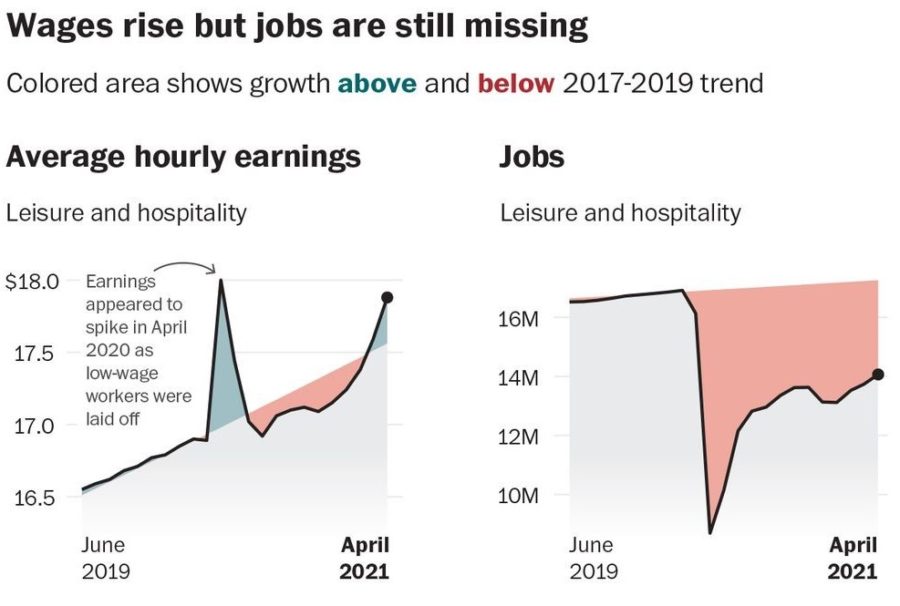Reassessing the kitchen
The American “labor shortage” in the food industry a result of Americans refusing poor conditions
The food industry faced many challenges because of the pandemic. As it ends, it will continue to face issues with labor shortages until conditions get better.
May 19, 2021
Beloved fast food locations and restaurants faced many challenges throughout the COVID-19 pandemic. From the initial laying off of workers due to state shutdowns to the full reopening of these restaurants, these workers have experienced an unstable year. Unfortunately, they continue to as gaps within their workforce widen despite America returning back to normal.
The restaurant industry is no stranger to having high employee turnover rates, but the growth of these rates is proving to be problematic. According to the Bureau of Labor Statistics, in 2019 the 78.9% turnover rate grew to a massive 130.7% in 2020. The pandemic obviously had a huge impact, and these industries aren’t recovering.
Since the start of the pandemic, the National Restaurant Association stated “family dining and casual dining operators say staffing levels are more than 20% below normal.” With 9.7 million people seeking employment, people would assume that these jobs would be filled almost instantly, but the gaps are still present and impacting the industry more than ever. The issue is quite simple; these companies aren’t paying their employees a livable wage on top of the poor conditions in these workplaces.
A study seeking out the minimum wage needed to sustain a life in America done by Living Wage Calculator concluded that an hourly wage of $16.54 is needed in 2021. Unfortunately, Indeed states that the “average salary for a Restaurant Staff is $11.62 per hour in the United States.” Considering this factor, the turnover rate and lack of employees makes complete sense. The pandemic threw massive curveballs into these workers’ lives and they don’t want to return to a job that doesn’t pay them enough to live.
In order for these employees to earn a sustainable amount of income, they have to work tirelessly and more often to make up for the short staff on top of issues this industry has been holding for years. A 2015 study from the Substance Abuse and Mental Health Services Administration revealed that the restaurant industry has the “highest rates of substance use disorders and the third-highest rates of heavy alcohol use of all employment sectors.” Though every circumstance might not be tied directly to the industry, the pressures of working strenuously in an almost unmanageable environment take a toll on an employee’s mental health.
In my experience as a part-time employee, this makes complete sense. Seeing my co-workers work double hours or overtime in order to pay for basic necessities at the expense of their mental health is a huge factor in why restaurants are facing staffing issues. Employees making the decision to quit isn’t a surprise to anyone working within the kitchen. These employees are simply underpaid and overworked.
Raising wages seems like a simple solution, but the problem is complex. Corporate and large companies might be able to raise the wage at no extra cost, but smaller companies will either have to raise their prices and possibly drive away business. A good example of a restaurant with livable wages is the franchise In-N-Out. Their wages start out at 14+ dollars depending on the area while maintaining their cheap fast food prices. Franchises like In-N-Out prove that this process isn’t impossible if the effort is put in. Until changes like these are made, the restaurant industry will continue facing problems within staffing.







